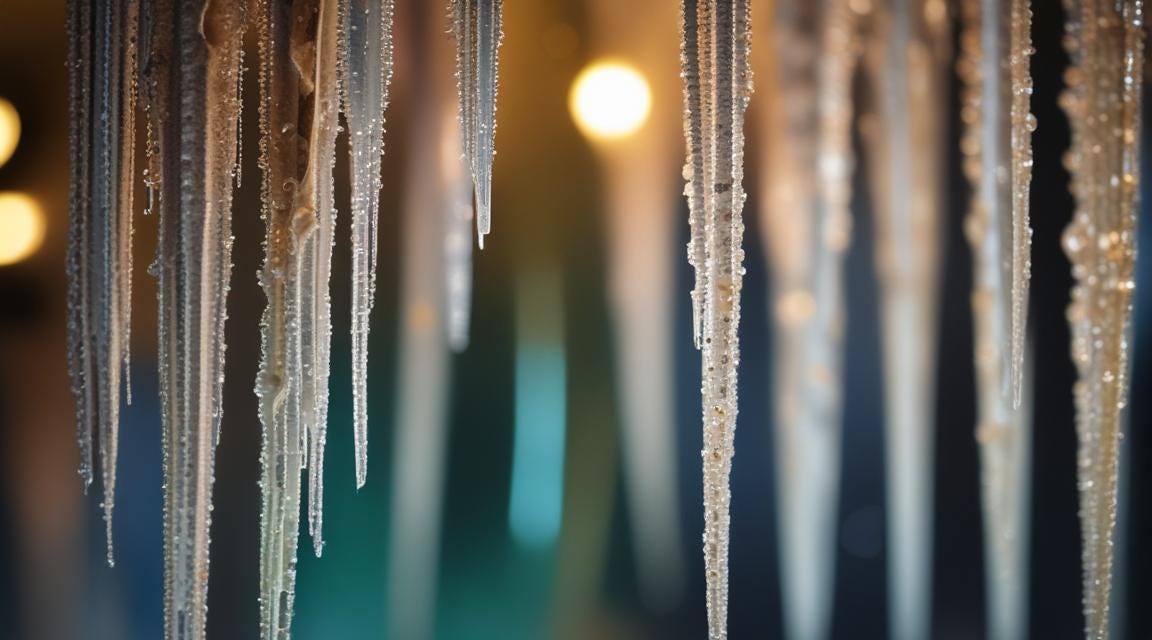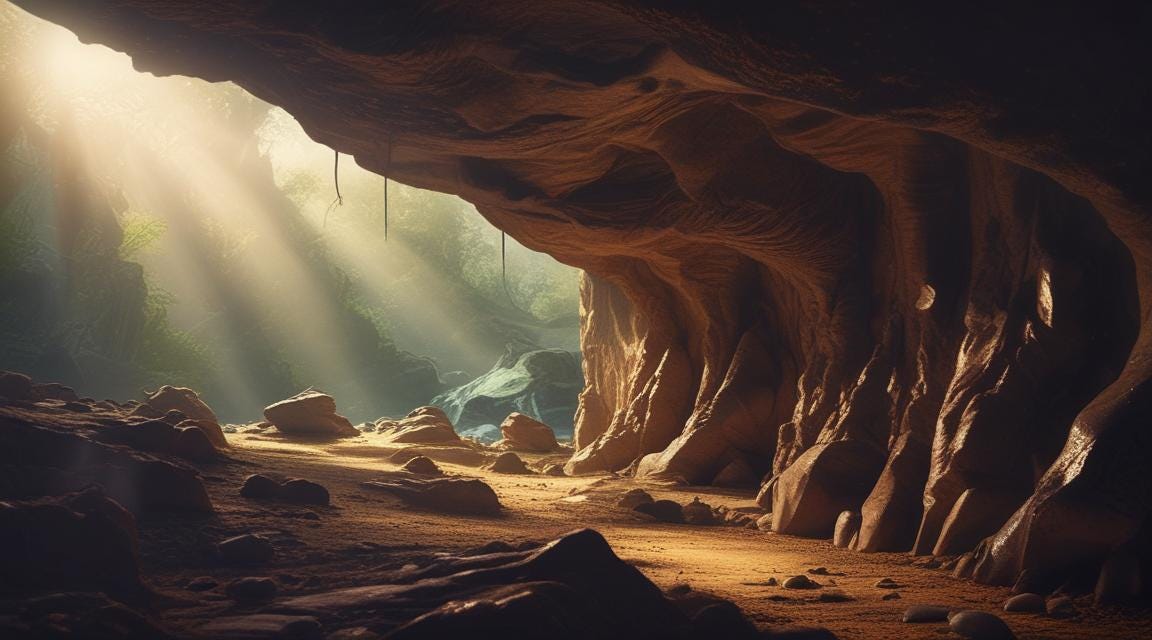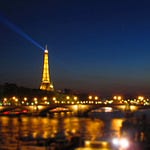I can hear the stalactites growing. Contorted faces leap out at me from their slippery bulwark formations. Darkness and sound play tricks on my senses. From this deep inside the planet, stone no longer feels immutable, adamant. Here, in its birth chambers, rock liquifies under time’s hands. Trickles like water, malleable and pliant.
It’s unnerving to consider the metamorphosis of stone in this fashion. On the surface of Earth, mountains appear immovable. A solid substratum seems to underpin topsoil. Cities give the impression of being constructed upon an obdurate foundation. But, dig deeper, and one enters a world where time and space warp.
Darkness moves, tangible as morass, weighting down my lungs. Long accustomed to a visual society, my other senses wrestle to make meaning out of this stygian world. Hands grapple timidly with terrain that feels gelatinous and evasive. Feet stumble continuously on outcrops and sills. Even my nose, brought up on associations of darkness with death, can only imagine aromas of decay so far below ground. My mind reverts to childhood tropes of ogres, trolls, demons, and peoples this landscape with monstrous shapes.
Caverns put paid to the idea that architecture is purely a human endeavor. In this subterranean domain wind, water, and time carve out tapering tunnels decorated with shelves and nooks, cathedral galleries resplendent in crystalline chandeliers, canyons nurturing streams, sloping valleys that plunge into sibylline lakes. Stone accepts and withstands — to a certain level — all elements. Hence its power. This bedrock contains stories of everything it has absorbed: from the skeletons of Quaternary sea creatures to the biographies of iron oxide veins and the histories of shifting tectonic plates.
When observed at these depths mineralogical taxonomies disintegrate. What defines rock from other material grows porous. Where to point for the beginning of a particular stalactite and the ending of another remains mysterious.
I begin to wonder: if we as a species are blips in the epochs and aeons that have shaped our actuality and will prevail beyond our existence, what becomes of responsibility, inheritance, legacy? Does nihilism triumph? Does how we spend our time on earth matter?
While I prefer not to have an egotistical view of space-time, thinking about such infinitude often feels daunting amid the reality of my little life. I struggle to find a sense of wholeness and purpose. Journeying through this labyrinthine amalgam, I come closer to understanding myself as an amorphous accumulation as well: an assemblage of bacteria, carbon, and mineral. A coalescence of places, events, and circumstances constantly subject to erosion, transformation, and absorption. I’m never one thing or another. Despite not subscribing to dichotomies, I still get ensnared into wanting to fit inside prescribed categories rather than embracing that I am magically entwined in the universe’s messy entanglement.
Hidden from quick, facile sensations of human history, I marvel at how limestone evolves slowly over millions of years without anxiety over its cultural impact. Eukaryotes emerge from the darkness lacking any knowledge over their significance to the animal kingdom. Mycelia tentatively branch and fractal their way in the absence of ensuing fortune or hope. Who can say how one microscopic deed may influence future realms beyond? That is a legacy worthy of mindful deliberation and tender action.
Bespoke Traveler Note:
“Underland,” by Robert Macfarlane journeys into deep time through subterranean landscapes. Find it at your public library or local bookstore.
Thanks for listening. “From the Darkness” was written and narrated by Atreyee Gupta. For more, head to our website at: https://www.bespoketraveler.com.





















Share this post